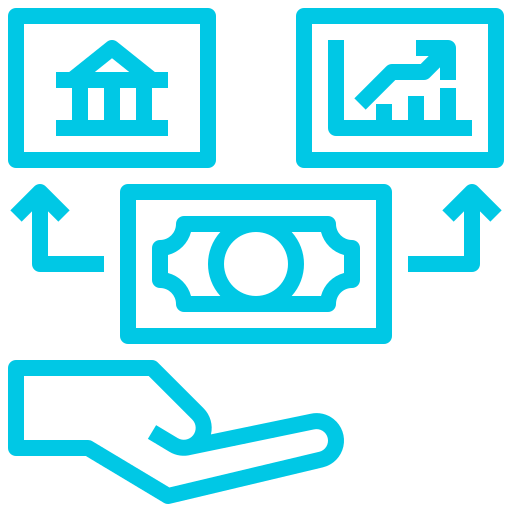Scenario Planning for Uncertainty: How Industry Leaders Prepare for the Future
Posted by | Fuld & Company
In a world where macroeconomic shocks, geopolitical shifts, and technology disruptions seem to unfold in increasingly compressed cycles, many leadership teams are discovering that agility is no longer a competitive advantage—it’s a requirement. Yet amid this turbulence, a small subset of companies consistently outmaneuver their peers. One common thread? Scenario planning, done well.
While many organizations acknowledge the importance of scenario planning, few implement it rigorously or revisit it often enough to make it actionable. Too often, scenario planning becomes a theoretical exercise—static decks that gather dust after an offsite. In contrast, the most resilient companies use it as a living, adaptive framework for anticipating volatility, pressure-testing strategic assumptions, and building institutional readiness.
From Forecasting to Foresight
Scenario planning differs fundamentally from forecasting. Forecasting aims to project the most likely outcome based on historical data. Scenario planning accepts that multiple futures are plausible—and prepares organizations to navigate across them.
Take the example of a global healthcare company operating across emerging and developed markets. When COVID-19 first emerged, they didn’t scramble to understand supply chain risks or regulatory hurdles. Instead, they activated elements of a plan that had been built years earlier as part of a pandemic scenario exercise—one of several designed to address biosecurity risks, regional instability, and global recession. Their preparedness wasn’t prescient—it was structured.
At its best, scenario planning integrates strategic, operational, and competitive intelligence into a flexible response model. It surfaces blind spots and cognitive biases. It invites leaders to confront uncomfortable possibilities. And it creates a shared language across functions for dealing with uncertainty.
Building a Scenario Framework That Drives Strategic Readiness
A robust scenario planning process begins with defining the “cone of uncertainty”—that is, identifying the external drivers most likely to shape the operating environment over a 3–5 year horizon. This typically includes:
- Geopolitical and regulatory shifts
- Technology adoption and disruption cycles
- Economic volatility and inflationary trends
- Consumer sentiment and behavior changes
- Competitor and ecosystem evolution
While this list may sound familiar, the key is how these drivers are combined. Leading organizations avoid generic narratives by anchoring scenarios around critical uncertainties—the factors that are both highly impactful and highly unpredictable. For example, instead of simply assuming “low” or “high” inflation, they explore what happens when inflation collides with supply nationalism or decarbonization mandates in unpredictable ways.
Each scenario should challenge the organization’s strategic assumptions. What if a key market contracts by 20%? What if a fast-follower competitor leapfrogs via acquisition? What if regulation fragments across regions? These aren’t academic hypotheticals—they’re design inputs for stress-testing the enterprise.
Once the scenarios are defined, organizations can test their current strategies and investments against them. Some of the most valuable insights come not from identifying the “most likely” future, but from asking: What would break first in this scenario? Where are we under-invested? Which decisions are most sensitive to external shocks?
Making It Actionable
For scenario planning to inform real decisions, it must be deeply integrated into strategic planning, capital allocation, and performance management processes.
Leading organizations adopt the following practices:
- Link scenarios to early warning indicators
Identify signposts that suggest a given scenario is unfolding (e.g., trade policy shifts, funding slowdowns, raw material pricing spikes). These indicators can be built into dashboards for board-level visibility. - Align scenarios with strategic initiatives
Evaluate how existing initiatives perform under each scenario. For example, a go-to-market strategy that assumes centralized procurement may struggle in a decentralized healthcare system scenario. - Create response playbooks
Establish contingent plans for scenarios with outsized downside risk. This helps reduce decision-making lag when signals emerge.
The Competitive Edge: Scenario Planning as a Strategic Capability
What separates scenario planning as a tactical exercise from scenario planning as a source of strategic advantage is consistency and discipline. Companies that treat it as a one-off exercise often fail to act on the insights it generates. Companies that institutionalize it—repeating the process annually or biannually, incorporating competitive intelligence, and tracking scenario-specific KPIs—are better positioned to respond with speed and confidence.
Scenario planning also aligns well with other strategic intelligence disciplines. It complements war gaming by testing how competitors might respond to macro shifts. It benefits from early warning systems that signal which scenario is in motion. And it helps focus competitive research on the questions that matter most.
Where to Go from Here
Fuld & Company has helped global organizations—from Fortune 500s to private equity firms—build and operationalize scenario planning frameworks that inform high-stakes decisions. To learn how scenario planning fits within a broader competitive strategy framework, explore our Competitive Strategy Consulting and Scenario Planning solutions.
Download the Early Warning Toolkit
Tags: Automobile Industry, competitive strategy consulting, Consumer Products & Retail, Energy, Healthcare & Life Sciences



















